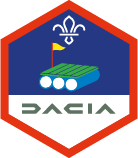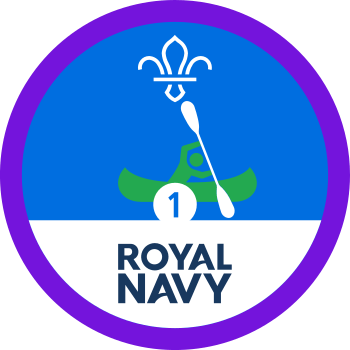
White water rafting
What to expect
White water rafting involves using single-bladed paddles to power a large inflatable raft with up to nine people. The raft is usually paddled through sections of rapids where the water moves quickly and in different directions, which causes the water to foam up and turn white, hence the name. The raft guide will steer the raft and tell the paddlers when to paddle, move or hold on. White water rafters often fall out of the raft, or flip the raft, and should hold on or swim back to the raft to climb back in.
White water rafting doesn’t have to take place on a wild river. There are artificial white water centres around, providing accessible activities for all ages.
What you’ll learn
White water rafting is a great way to try something new and experience white water for the first time. It’s also the perfect opportunity to build up your teamwork skills as everyone must work together to keep the raft on course.
Fun facts
The rubber river rafts most commonly used for white water rafting were invented by American soldiers in the 1840s. Lieutenant John Fremont used one to lead an expedition to survey the Rocky Mountains and the Great Plains. Today, white water rafting is regarded as a popular team-building activity, with groups taking to the water to see how well they cooperate when the going gets rough!
Handy hints
- ‘You must be this tall to ride.’ Most white water rafting centres have an age limit of 12 years old, so this might not be suitable for your group.
- In for a penny. White water rafting can be quite expensive and not accessible for everyone. Consider other activities like stand-up paddleboarding or kayaking if the cost is too much.
Safety
You must always:
- Complete a risk assessment
- Have the right ratios of number of adults to provide suitable supervision
- Set up an InTouch process
- Know what to do in an emergency
- Share information with parents and carers with an activity information form
- Get approval from your commissioner
Be safe outdoors:
- Check the weather forecast
Be safe in water:
Everyone should be able to swim 50 m wearing the clothing or equipment for the activity. Non-swimmers will need additional support.
Water can be dangerous - be aware of the risks.
The category of water depends on how safe the water is. Use our waterways directory to check.
Be sure to manage the group when near water, keeping everyone safe.
Make sure that all equipment is fit for purpose and in good condition:
Everyone must wear a life jacket or buoyancy aid.
The instructor must make sure boats are seaworthy.
There are regulations you must follow if you are hiring a boat.
Joint activities with other organisations:
- This activity can be run jointly with Girlguiding.
- This activity can be run with other organisations.
This activity can be led by you or someone else in Scouts:
The activity leader must have an adventurous activities permit with the right level and permissions for your group.
You don't need a permit for activities on Class C waters (safe, inland water less than 100 m wide).
Where the group is entirely members over the age of 18 the permit scheme does not apply, please follow the rule 9.8 adult groups.
You can go to a centre or use an activity leader who is not part of Scouting:
You must find a suitable provider who meets the following requirements:- The centre/instructor should hold one of these: (If the provider is AALA exempt)
- British Canoeing - Stadium Raft Guide, River Raft Guide or River Trip Leader as appropriate to the activity and environment
The provider must have public liability insurance.
Guidance
Reflection
White water rafting is a great thrill and the perfect way to enjoy some wild water. But more and more rivers around the world are being dammed to produce hydro-electricity for the surrounding areas. This means that waterways are blocked and lots of great white water spots are being tamed. Discuss with your group the pros and cons of this situation. Is it more important to build new ways to produce renewable power? Or is it more important to preserve recreation spots and local ecosystems?
It may be difficult to come up with a ‘correct’ answer or even agree on the situation but encourage group members to listen to each other’s ideas and opinions. This is also a great opportunity to remind everyone that although we may have different opinions, this doesn't affect our ability to get on with each other and work well together as part of a team.
- White water rafting can often be adapted so more people can give it a go. Many outdoor centres have facilities that cater for people with additional needs and experienced instructors to help everyone achieve their goals. Get in touch with your local provider to chat through the needs of people in your group – make sure you give them plenty of notice.
- The rafts can be adapted in a range of different ways to make sure those who can safely ride have the opportunity to get involved. Also, white water rafting may be done out on a river or on specially-designed white water courses, with graded levels of difficulty. As adaptations may need to be made, get in touch early with your provider to discuss any additional needs and make sure they can provide a session that works for you and your group.
All Scout activities should be inclusive and accessible.
Put your white water nerve and kayaking technique to the test and give white water kayaking a go next.


